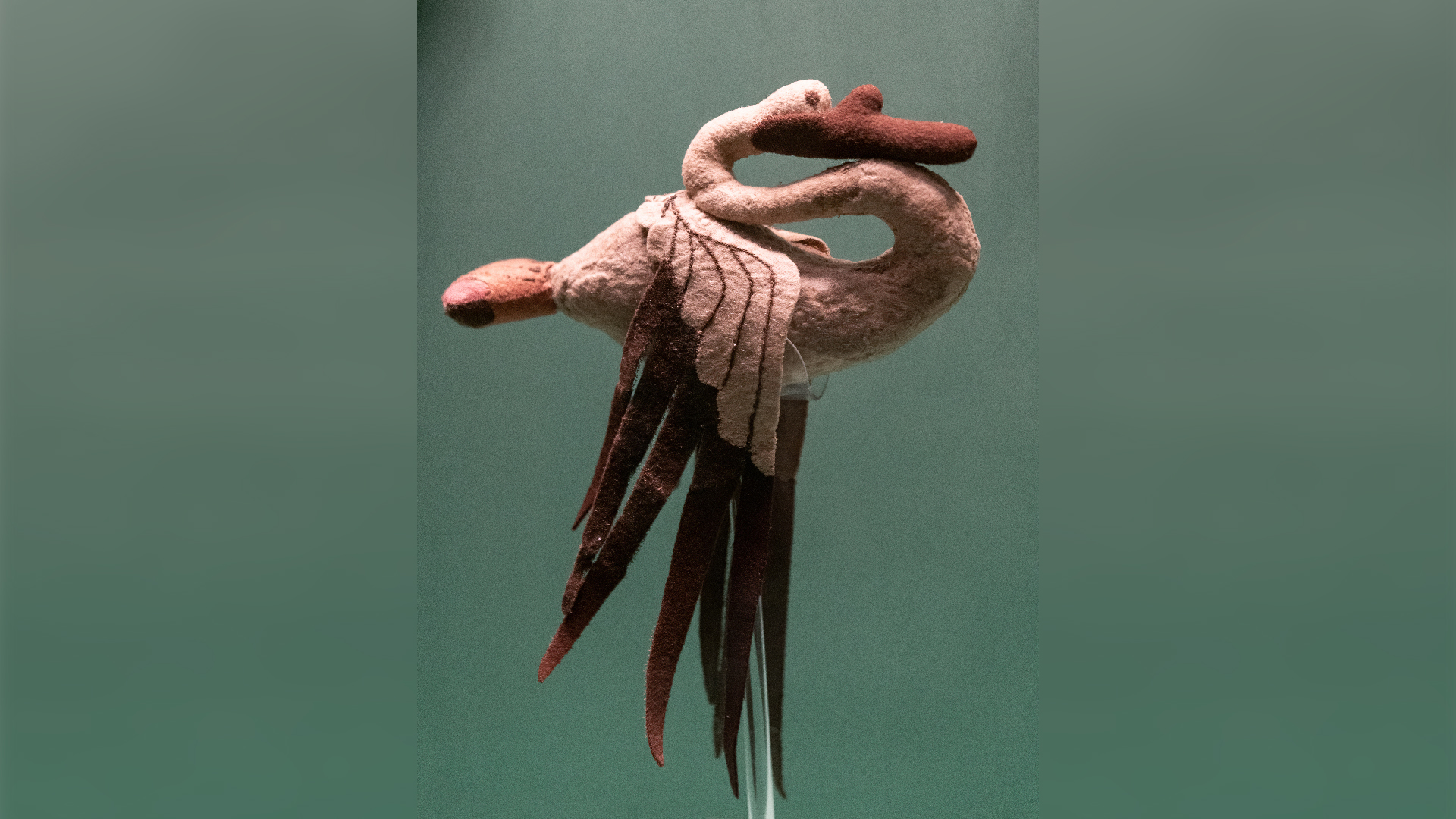
Name: The Pazyryk Swan
What it is: An ornamental plush figurine of a swan made from reindeer felt and filled with reindeer wool
Where it is from: The Pazyryk Valley in the Altai Mountains of Russian Siberia
When it was made: About 2,400 years ago
Related: Mask of Agamemnon: A gold death mask once thought to be evidence of the Trojan War
What it tells us about the past:
This soft figurine is attributed to the Pazyryk culture, an Iron Age people thought to have been part of the Saka cultural group — nomads who may themselves have been an eastern branch of the Scythian culture.
Along with other treasures, the nearly 12-inch-tall (30 centimeters) swan was discovered in a burial mound in the Pazyryk Valley of the Altai Mountains, near Russia's borders with Kazakhstan, China and Mongolia.
Archaeologists think the figurine dates to the fifth or fourth century B.C. The swan's body is made from reindeer wool that has been processed into white felt, while the beak, eyes and wing tips are made from black felt. Reddish-brown felt was used for the "feet," and the figurine is stuffed with reindeer wool.
The feet also contain wooden sticks that support the swan in an upright position. Curators at Russia's Hermitage Museum in St. Petersburg, where it is on display, think these sticks were used to mount the swan on a wooden chariot found nearby, or perhaps on the top of a tent-like structure erected over the burial mound but which rotted away long ago.
According to the museum, the swan symbolized life in three spheres: air, land and water.
The swan or a similar water bird also may have featured in a creation myth: there was "a widespread concept of the creation of the universe by a swan, duck or goose, which was characteristic of many cosmogonical conceptions in ancient times," according to the museum.
Archaeologists from the Soviet Union began excavating the ancient burial mounds in the Pazyryk Valley in the 1920s and found the felted swan in 1949, according to the University of Washington.
Because the region is high — and therefore cold — many of the burial mounds are perpetually frozen and have preserved many organic materials, including human remains.







